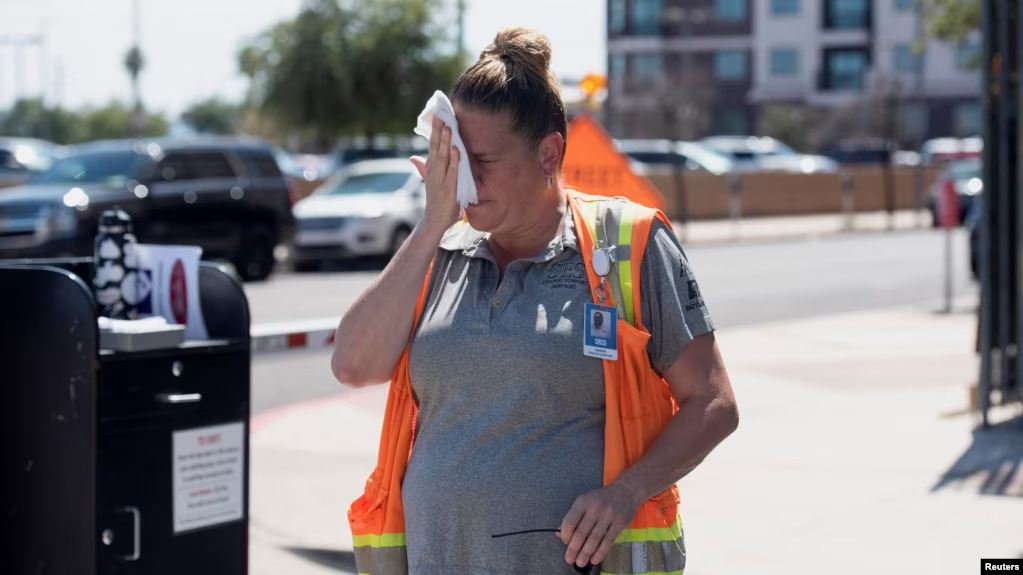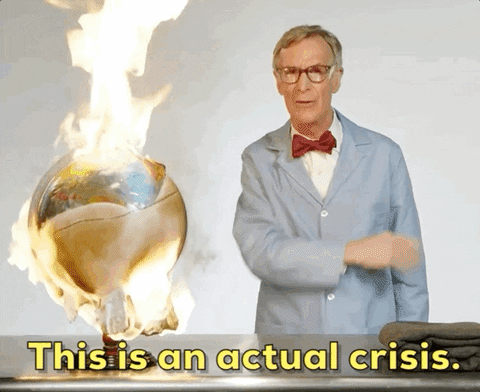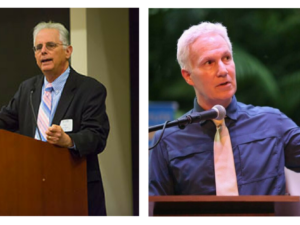
We’ve had so many “hottest months on record” over the last two years, it’s getting hard to keep up. As of writing, the official hottest month on record happened just two months ago, in July 2024. The US National Oceanic and Atmospheric Administration (NOAA) reported July 2024’s temperatures were 0.03°C (0.05°F) higher than July 2023, and it was “more likely than not the warmest month on record for the globe since 1850.”
July was also the 14th-consecutive “hottest month on record.” Stop the ride, please, we’d like to get off.
As summer temperatures soar and weather patterns become increasingly erratic, our brains tend to ask just one question on repeat: why oh why is it so hot? And (bonus question) how can we make it stop?
A fun science lesson
The answer to our questions lies in the science of greenhouse gases and their impact on our planet. It all starts with the greenhouse effect, which is crucial for life on Earth. It keeps our planet warm enough to sustain life by trapping some of the sun’s energy in the atmosphere. Here’s a simplified rundown:
- Solar radiation: The sun emits energy in the form of solar radiation. When this energy reaches Earth, some of it is absorbed by the surface, warming the planet.
- Infrared Radiation: The Earth, in turn, emits energy back toward space in the form of infrared radiation (heat).
- Greenhouse Gases: Greenhouse gases in the atmosphere, such as carbon dioxide (CO2), methane (CH4), and nitrous oxide (N2O), trap some of this infrared radiation, preventing it from escaping into space. This trapped heat helps to maintain a temperature in which life (that’s us) can exist.
When uninterrupted, this process works as swimmingly as a sea turtle in the East Australian Current. The sun gives us heat, we release some of the heat, but keep enough to enjoy pleasantly warm summer days on the patio of our favorite Mexican restaurant. Thank you, science!
A not-so-fun science lesson
Okay, let’s talk about the not-so-fun part. The flip side of the greenhouse effect coin.
Human activities, like the burning of fossil fuels and deforestation, have put a lot of greenhouse gas into the atmosphere. Way too much. Think of the regular greenhouse effect as one, nice cozy blanket. Now think of the enhanced greenhouse effect as that blanket plus a duvet, sheet set, wool pajamas, space heater, and 17 other blankets thrown on for good measure.
This “enhanced greenhouse effect” results in too much heat being trapped — the kind of heat that at best prevents your kids from playing outside and at worst leads to widespread health issues and even death.
The increase in greenhouse gases has been well-documented through scientific studies. More than half of Americans understand that human activity is causing it. It has some particularly unpleasant consequences like:
- Rising Temperatures: Why is it so hot? Because these extra greenhouse gases have driven up our average global temperature over the past century. We keep having the hottest month on record seemingly every month.
- Melting Ice and Rising Sea Levels: This is what causes those sad photos you may have seen of polar bears drifting on melting iceberg chunks. Higher global temperatures are causing polar ice caps and glaciers to melt, contributing to rising sea levels. This is bad for the polar bears, but it can lead to coastal erosion, increased flooding, destruction of beachfront property, and the loss of habitat for wildlife.
- Extreme Weather Events: If hurricane season seems longer and stronger than you remember, you’re right. The warming climate is linked to an increase in the frequency and severity of extreme weather events, like hurricanes, heatwaves, and heavy precipitation.
- Ocean Acidification: Increased greenhouse gas levels, like carbon dioxide, also result in higher concentrations of carbonic acid in the oceans, leading to ocean acidification, or a higher pH level in the planet’s oceans. Just like your aunt’s in-ground pool must maintain a certain pH, our oceans need a limited amount of acidity to sustain life. A higher pH is harming marine life, particularly organisms with calcium carbonate shells or skeletons, such as corals and shellfish.
How can we make it less hot?
If addressing climate change was easy, we wouldn’t be writing this blog. Solving global warming requires a lot of cooperation, time, and agreement on multiple solutions. Some of the things we can do to cool it down in here include:
- Electrify Everything: Fossil fuels are literally prehistoric, but nearly 75% of buildings in the U.S. use fossil fuel-based systems to heat space and water or cook food. These actions create 10% of our carbon pollution each year. By switching from outdated fossil fuel appliances in existing and new construction, we can put a cap on dirty energy and limit future heating.
- Embrace Clean Energy: If we want to transition America to clean energy-based systems quickly, we need to reform our permitting system. Right now, it can take years to approve permits required to build new clean energy infrastructure. Without permitting reform, we won’t see the major carbon-cutting results promised by the Inflation Reduction Act of 2022.
- Support Your Local Forest: Trees pull carbon out the air, provide much-needed shade in urban areas, and reduce the amount of air conditioning we use on hot summer days. Also, everyone loves trees.
- Educate and Advocate: If we don’t talk about why it’s so hot, it won’t seem like a major issue. Raising awareness about climate change and advocating for strong climate policies is crucial. This is where volunteer-based organizations like Citizens’ Climate Lobby (CCL) come in.
Taking action: Your next steps
Citizens’ Climate Lobby is a non-profit, non-partisan organization focused on empowering citizens to advocate for effective climate solutions. Our supporters cover the political spectrum and work in more than 450 local chapters. Together, we’re building support for national bipartisan solutions to climate change.
If you’re concerned about the rising temperatures and heat waves, joining CCL brings you into a broader movement of everyday people working toward meaningful climate legislation. We’ll get you connected with your local chapter and provide you with immediate actions you can take on behalf of the planet, like asking your member of Congress to support a price on carbon and clean energy permitting reform legislation.
Our warming planet is a big issue that requires expert teamwork. By understanding the science behind why it’s so hot and getting involved, you can help enact meaningful solutions for a more sustainable future filled with safe, fun summer days. Let’s get started.








